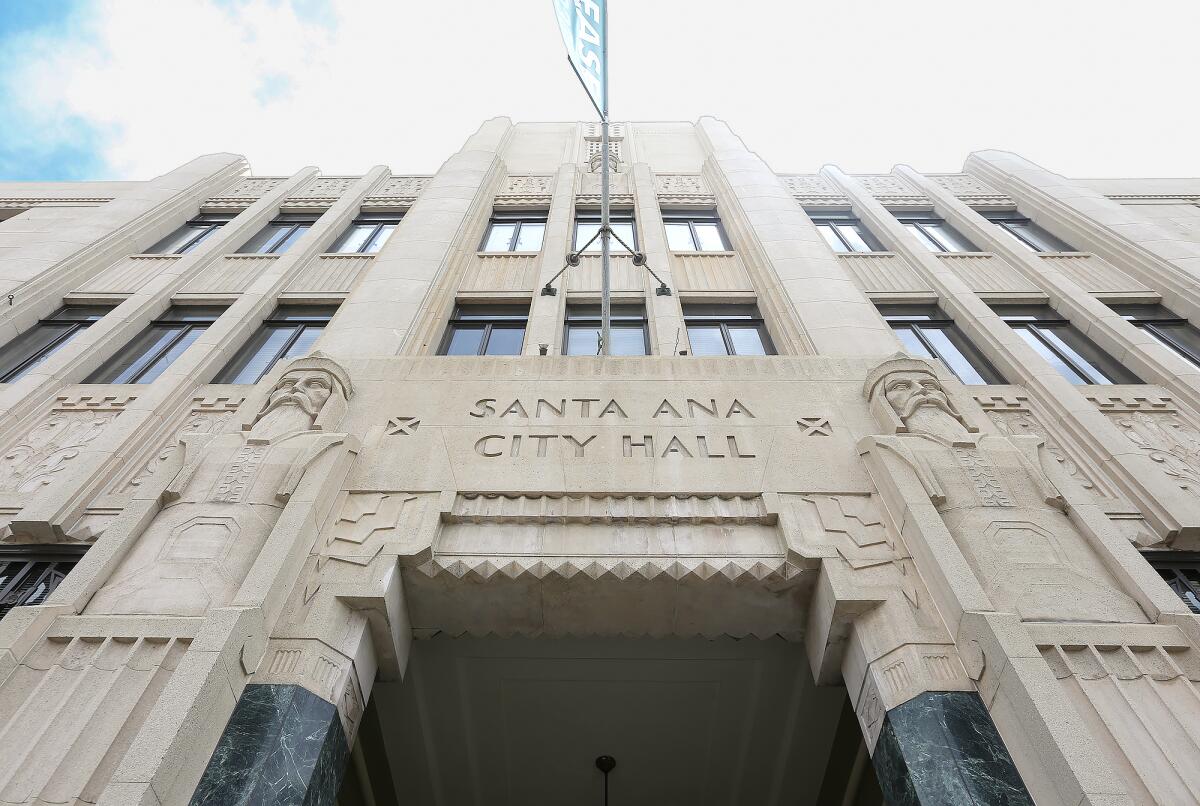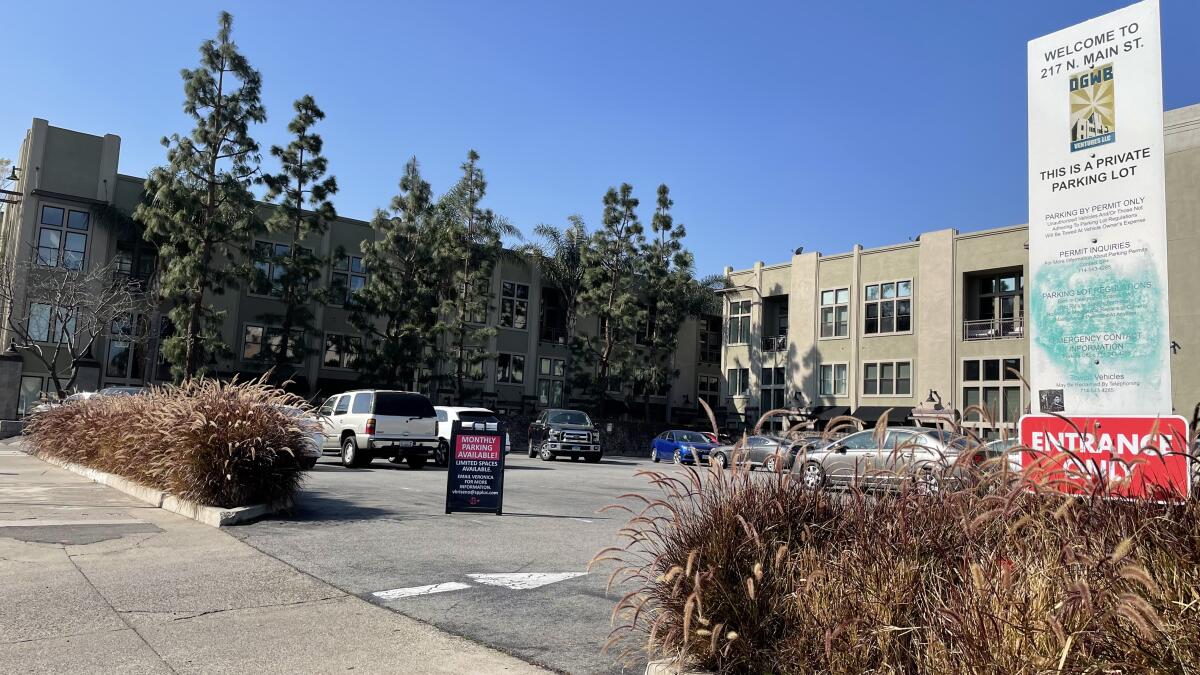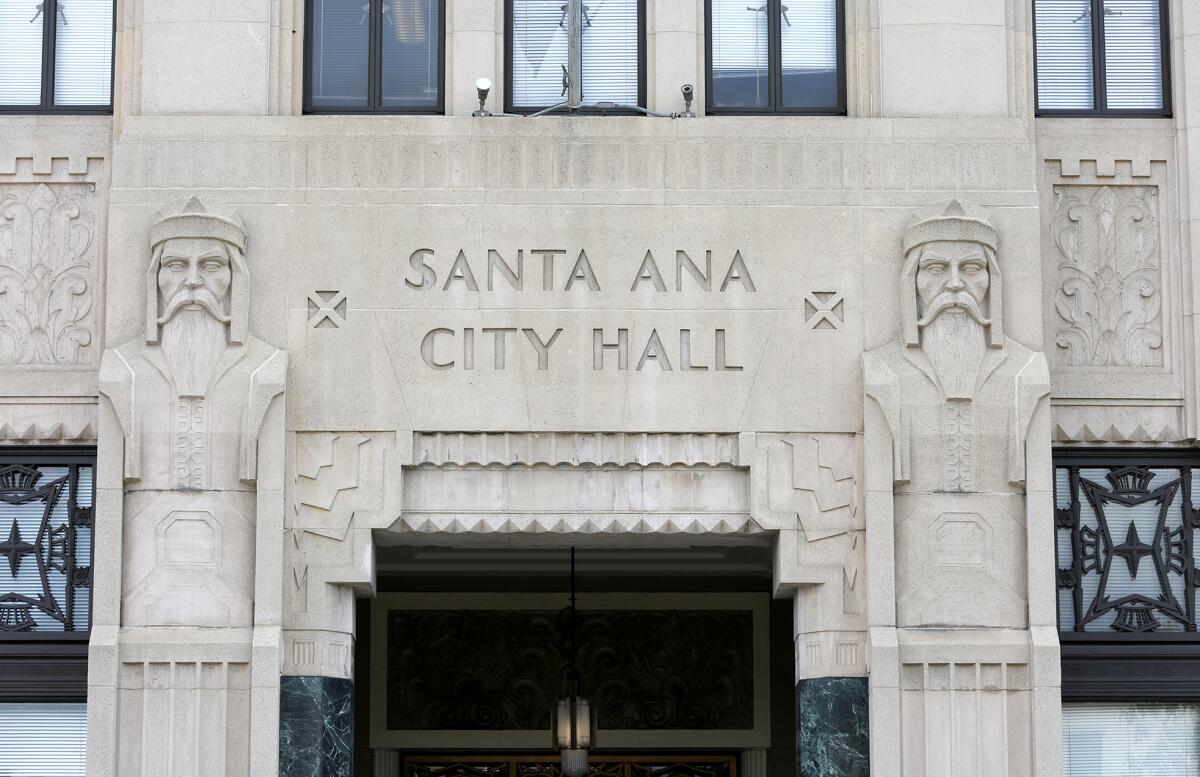Santa Ana prepares formal apology for 1906 Chinatown burning, past anti-Chinese racism

Within days, a small white tent stood alone near the washed out ashes of Santa Ana’s Chinatown in 1906 with a cautionary sign: “leprosy: keep out.”
An ailing Wong Woh Ye lay inside the tent in quarantine.
The day before the fire, his documented case of the disease, which was later disputed, prompted an emergency meeting of the Santa Ana City Council on the morning of May 25, 1906. Acting on a resolution drafted by the city’s Board of Health, council members unanimously moved to condemn Chinatown’s remaining buildings and directed the fire marshal to burn it all to the ground.
As word spread, more than 1,000 residents gathered in downtown later that night to watch the fiery finale of a years-long campaign against Santa Ana’s Chinese residents in the wake of the Chinese Exclusion Act of 1882. The Los Angeles Times deemed the blaze “as picturesque an event as could be imagined.”
But now, more than a century later, it’s seen as a shameful chapter in the city’s history — one that Santa Ana’s current council is moving to officially apologize for.
“We just want to do what’s right and recognize past wrongs,” said Thai Viet Phan, Santa Ana’s first ever Vietnamese American councilwoman. “I felt it was really important to me as someone who is trying to do my best to revitalize our Asian American heritage in the city.”
In a joint effort, Councilman Johnathan Ryan Hernandez, Planning Commissioner Alan Woo, Assistant City Manager Steven Mendoza and Councilwoman Phan worked on the draft apology.
It offers a formal atonement to “all Chinese immigrants and their descendants who came to Santa Ana and were the victims of systemic and institutional racism, xenophobia and discrimination.”
The resolution is also unequivocal in naming the past city officials responsible as well as deeming the burning of Chinatown as an act of “fundamental injustice, terror, cruelty and brutality.”
It served as the culmination of an effort to rid the area of Chinese residents that intensified when the city bought a lot in 1903 that abutted the enclave as the site of a new city hall.

By 1910, only one Chinese resident remained in Santa Ana according to census records; about 200 Chinese residents had once called Chinatown home during its peak in the 1890s.
Fred Lau, the late proprietor of Santa Ana Food Market, was one of the first Chinese Americans to return to Santa Ana during the 1940s. He opened his grocery store in 1949.
“The Lau family gave a lot of us our first jobs in Santa Ana when we were teenagers,” Hernandez said. “They had close relationships with my family.”
Santa Ana Food Market, which is still in business today, is where the councilman recalled first learning of the burning down of Chinatown from its owners.
With that history in mind, Hernandez began working with Woo, his Planning Commission appointee, on ways to redress the injustice when Phan had received an email earlier this year from a resident about recent Chinatown arson apologies elsewhere, including San Jose.
Woo felt a Santa Ana apology as timely as ever.
“There’s a wave of anti-Chinese and anti-Asian hate that has been fueled over the last two years,” he said. “It was important to ask for this, not just for me, but on behalf of the Chinese community because often we’re not viewed as citizens. We are treated as foreigners rather than citizens.”
An annual report by the Orange County Human Relations Commission charted a dramatic 1,800% increase in anti-Asian American hate incidents in 2020, which was the first year of the coronavirus pandemic.
In addition to the apology, there have also been efforts to commemorate the history with an on-site memorial.
During an October 2020 Downtown Inc. board meeting, a consultant briefly mentioned how an architect and urban planner were working with local historian Dylan Almendral and Chinese American groups on such a project.
“It was certainly a step in the right direction,” Hernandez said.
Taking the lead, supportive council members want to allocate funding from the city’s budget for a future memorial.
But the apology is slated to come first.
During the Santa Ana City Council meeting on May 3, council members directed staff to prepare the resolution to come back before a vote — and soon.
Phan insisted that the vote happen in May, which is Asian American and Pacific Islander Heritage Month; earlier in the meeting, both she and Hernandez presented a proclamation to the Lau family in recognition of the month.
The councilwoman also suggested that, if passed, there be a ceremonial signing of the resolution at the parking lot on Third and Bush Street, the site where Chinatown once stood.
Councilman David Peñaloza offered support for the apology and a ceremonial signing.
“It’s a sad, sad chapter in this city’s history,” he said. “We need to recognize the mistake that was made by previous leadership here.”

The burning down of Chinatown wasn’t the last time disease provided cover for discrimination in Santa Ana.
Dr. John I. Clark, the city’s health officer, had inspected the enclave and later cautioned residents from buying produce there out of concerns for leprosy; he would also advise the Santa Ana Board of Education to segregate white and Mexican students during the 1918 pandemic.
Less than two weeks after the Chinatown blaze, Ye was found dead inside his quarantine tent.
Before that, Councilman John Cubbon resigned from his post on May 28, 1906. The Times reported that he voted to authorize the burning down of Chinatown only after “considerable wrangling” and though there wasn’t an official explanation given, “reliable sources” placed that decision as the reason for his sudden resignation.
For Woo, the current council’s discussion this week marked a significant step toward making amends long overdue.
“The people’s democracy was used against Chinese Americans,” he said. “That deserves an apology. The lives of over 200 Chinese immigrants were affected by that decision.”
All the latest on Orange County from Orange County.
Get our free TimesOC newsletter.
You may occasionally receive promotional content from the Daily Pilot.




